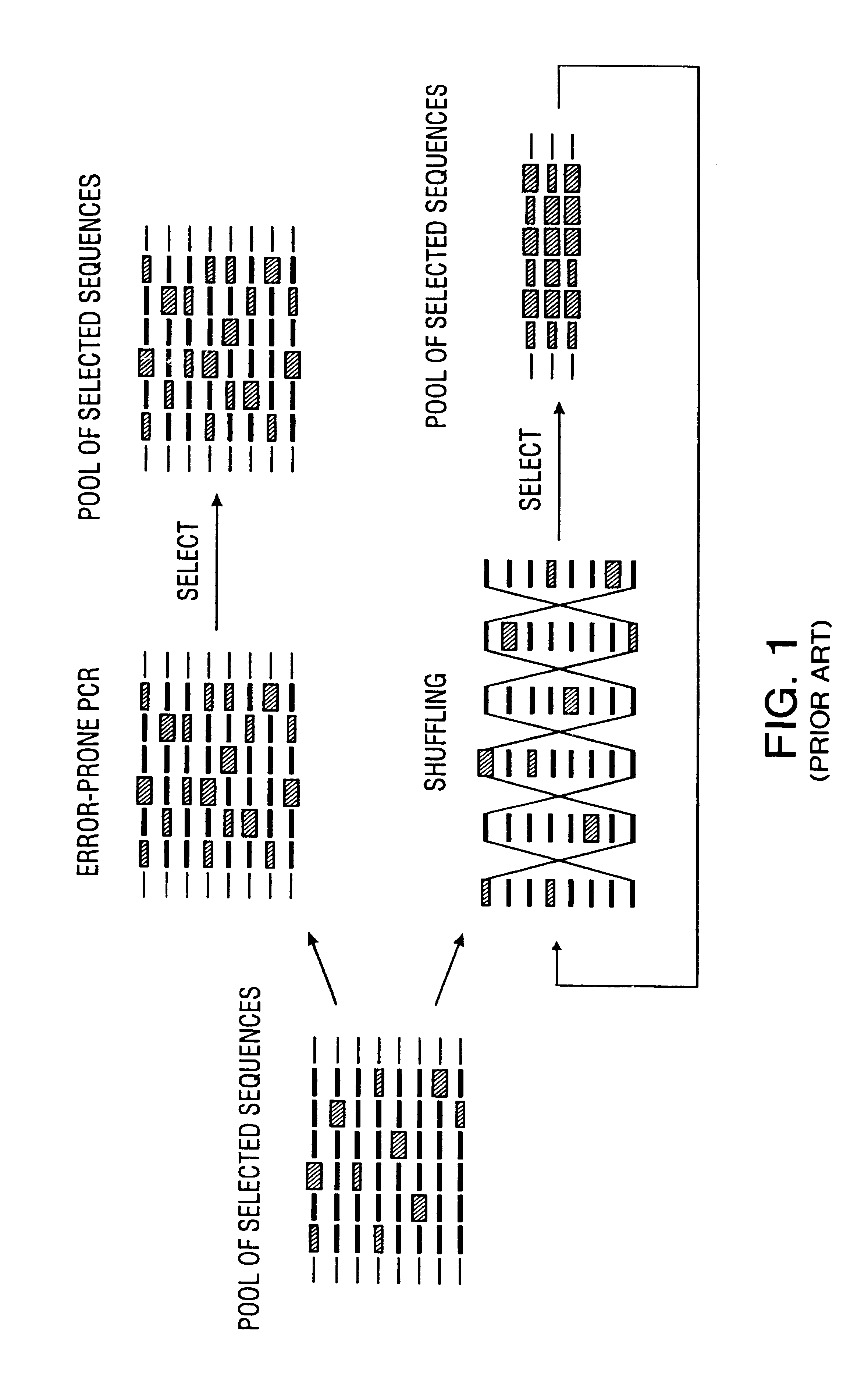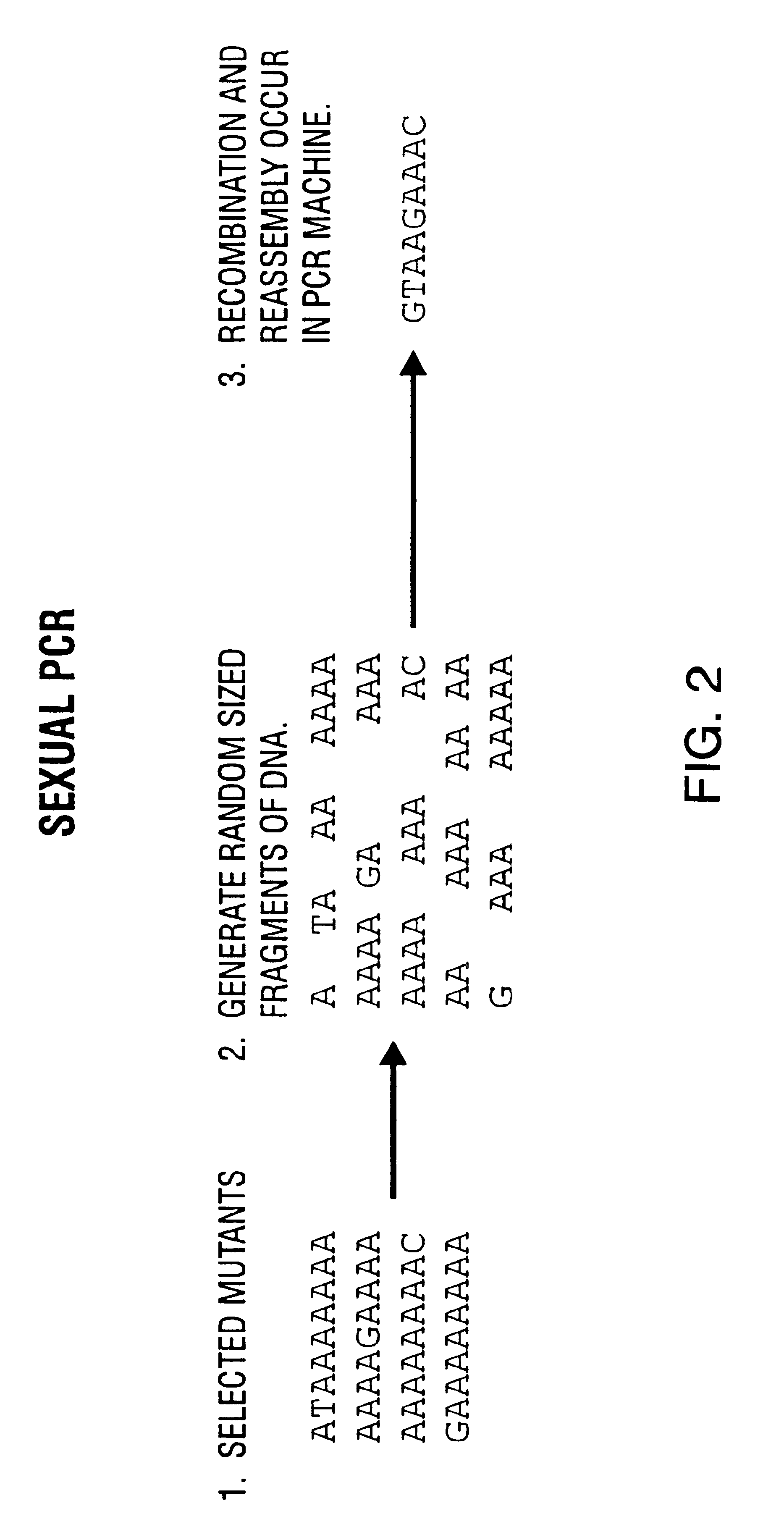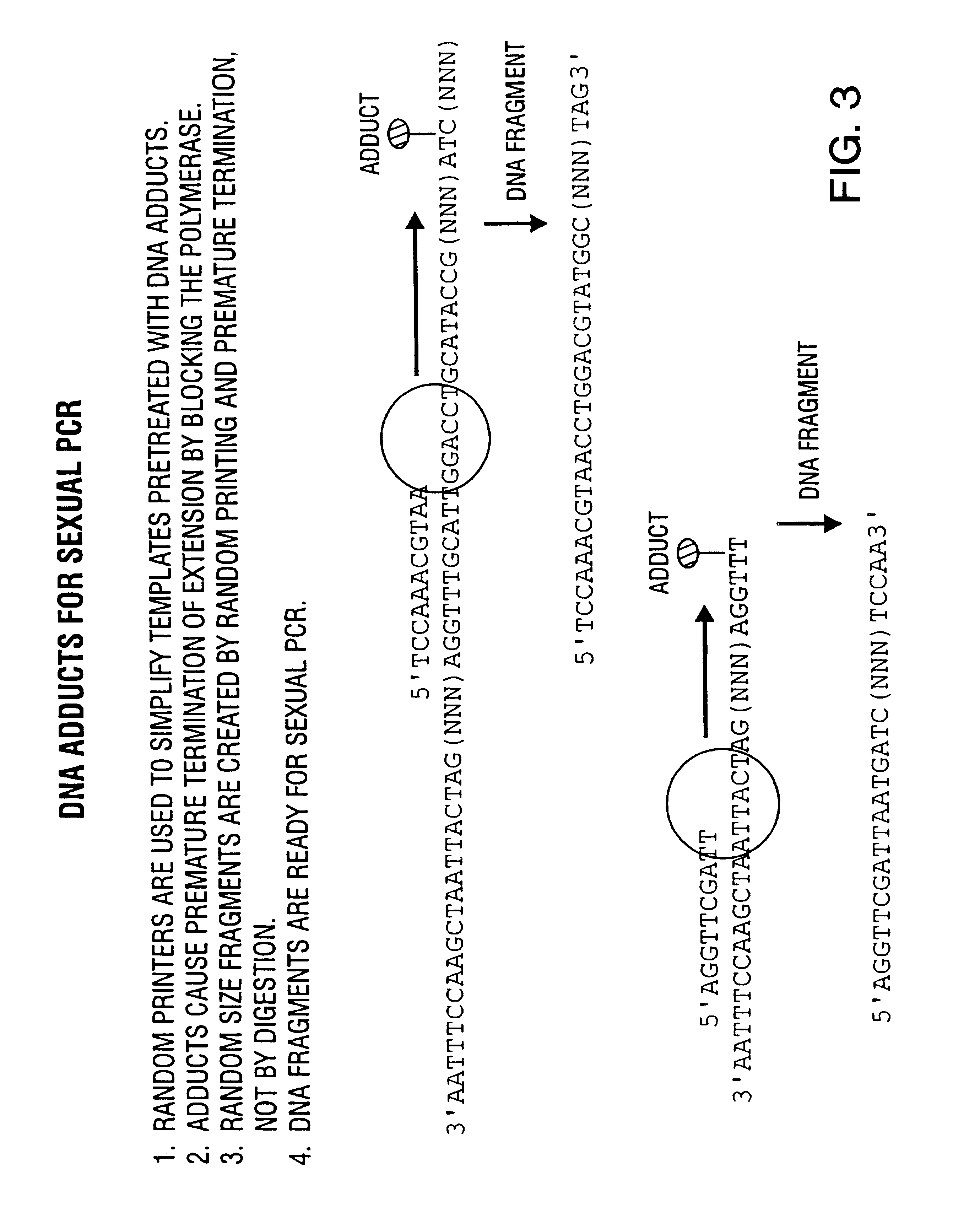Method of DNA shuffling with polynucleotides produced by blocking or interrupting a synthesis or amplification process
a technology of dna shuffling and polynucleotides, which is applied in the direction of nucleotide libraries, directed macromolecular evolution, peptides, etc., can solve the problems of protocol inability to random mutagenesis of an average-sized gene, low processivity of the polymerase, and inability to limit the practical application of error-prone pcr protocols
- Summary
- Abstract
- Description
- Claims
- Application Information
AI Technical Summary
Benefits of technology
Problems solved by technology
Method used
Image
Examples
example 2
Isolation of Random Size Polynucleotides
Polynucleotides of interest which are generated according to Example 1 are gel isolated on a 1.5 % agarose gel. Polynucleotides in the 100-300 bp range are cut out of the gel and 3 volumes of 6 M NaI is added to the gel slice. The mixture is incubated at 50.degree. C. for 10 minutes and 10 .mu.l of glass milk (Bio 101) is added. The mixture is spun for 1 minute and the supernatant is decanted. The pellet is washed with 500 .mu.l of Column Wash (Column Wash is 50% ethanol, 10 mM Tris-HCl pH 7.5, 100 mM NaCl and 2.5 mM EDTA) and spin for 1 minute, after which the supernatant is decanted. The washing, spinning and decanting steps are then repeated. The glass milk pellet is resuspended in 20 .mu.l of H.sub.2 O and spun for 1 minute. DNA remains in the aqueous phase.
example 3
Shuffling of Isolated Random Size 100-300 bp Polynucleotides
The 100-300 bp polynucleotides obtained in Example 2 are recombined in an annealing mixture (0.2 mM each dNTP, 2.2 mM MgCl.sub.2, 50 mM KCl, 10 mM Tris-HCl ph 8.8, 0.1% TRITON X-100.RTM., 0.3.mu.; TAQ.RTM. DNA polymerase, 50 .mu.l total volume) without adding primers. A ROBOCYCLER.RTM. by STRATAGENE.TM. Corporation was used for the annealing step with the following program: 95.degree. C. for 30 seconds, 25-50 cycles of [95.degree. C. for 30 seconds, 50-60.degree. C. (preferably 58.degree. C.) for 30 seconds, and 72.degree. C. for 30 seconds] and 5 minutes at 72.degree. C. Thus, the 100-300 bp polynucleotides combine to yield double-stranded polynucleotides having a longer sequence. After separating out the reassembled double-stranded polynucleotides and denaturing them to form single stranded polynucleotides, the cycling is optionally again repeated with some samples utilizing the single strands as template and primer DNA a...
example 4
Screening of Polypeptides from Shuffled Polynucleotides
The polynucleotides of Example 3 are separated and polypeptides are expressed therefrom. The original template DNA is utilized as a comparative control by obtaining comparative polypeptides therefrom. The polypeptides obtained from the shuffled polynucleotides of Example 3 are screened for the activity of the polypeptides obtained from the original template and compared with the activity levels of the control. The shuffled polynucleotides coding for interesting polypeptides discovered during screening are compared further for secondary desirable traits. Some shuffled polynucleotides corresponding to less interesting screened polypeptides are subjected to reshuffling.
PUM
 Login to View More
Login to View More Abstract
Description
Claims
Application Information
 Login to View More
Login to View More - R&D
- Intellectual Property
- Life Sciences
- Materials
- Tech Scout
- Unparalleled Data Quality
- Higher Quality Content
- 60% Fewer Hallucinations
Browse by: Latest US Patents, China's latest patents, Technical Efficacy Thesaurus, Application Domain, Technology Topic, Popular Technical Reports.
© 2025 PatSnap. All rights reserved.Legal|Privacy policy|Modern Slavery Act Transparency Statement|Sitemap|About US| Contact US: help@patsnap.com



